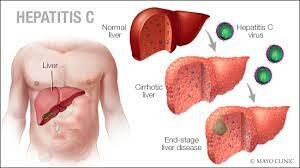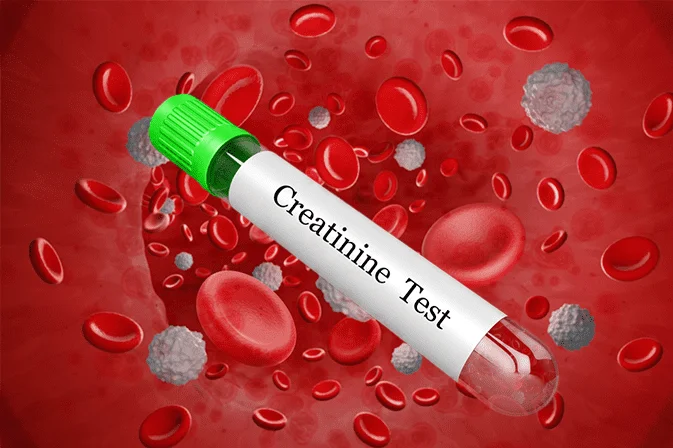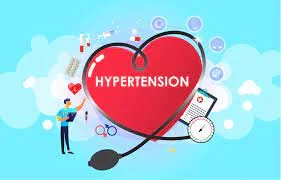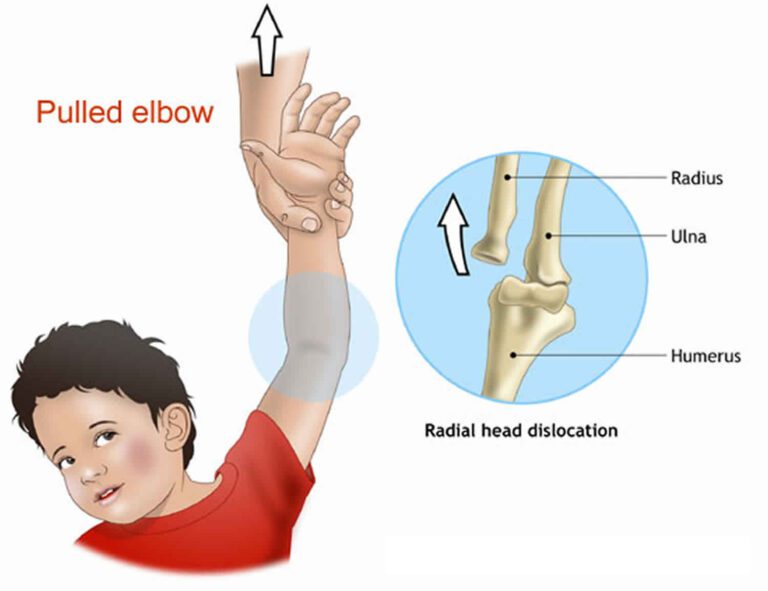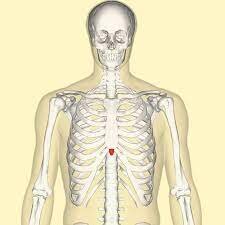Occupational Lifestyle Diseases
Table of Contents
What is an Occupational Lifestyle Disease?
Occupational lifestyle diseases are health conditions that are directly linked to the lifestyle and work environment of an individual. These diseases are caused by the conditions, habits, and activities that are associated with an individual’s occupation. They are often chronic conditions that develop over time due to repeated exposure to certain risk factors associated with the occupation.
Examples of occupational lifestyle diseases include heart disease, hypertension, diabetes, respiratory diseases, musculoskeletal disorders, and mental health conditions. These diseases are often linked to lifestyle factors such as lack of physical activity, poor diet, stress, exposure to toxic substances, and long working hours.
Prevention of occupational lifestyle diseases involves promoting healthy lifestyle habits, creating a safe and healthy work environment, providing regular health check-ups, and offering employee wellness programs. Early diagnosis and treatment are also important in managing these diseases and preventing complications.
- Occupational lifestyle diseases [The emerging lifestyle diseases not only impact the economic essentials of the people but also the productivity of the economy which is going to be intimidated dangerously in the near future]
- Lifestyle diseases are ailments whose occurrence is primarily linked to the day-to-day life habits of an individual. If these daily practices of an individual are inappropriate, they might lead one to follow a sedentary lifestyle on a day-to-day basis. Such a lifestyle can further lead to several chronic non-communicable conditions, which can have near-life-threatening consequences.
- Now that you are aware of the importance of lifestyle disorders, continue reading to discover the many sorts of lifestyle disorders.
Some of the typical diseases experienced because of occupational lifestyle are Alzheimer’s disease, arteriosclerosis, cancer, chronic liver disease/cirrhosis, chronic obstructive pulmonary disease (COPD), diabetes, hypertension, heart disease, nephritis/CRF, and stroke.
- The term “lifestyle diseases” refers to conditions whose emergence is mostly based on a person’s daily routine and is a result of that person’s poor interaction with their environment. The main factors contributing to lifestyle diseases contain bad food habits, physical idleness, bad body posture, and a troubled biological clock.
- What’s worse, around 80% of these deaths will occur in low and middle-income nations like India which are also disabled by an ever-increasing load of infectious diseases, poor mother and perinatal diseases, and nutritional deficits.
- The study ‘Preventive Healthcare and Corporate Female Workforce’ also said that extended hours and acting under tough deadlines cause up to 75% of working women to suffer from depression or known anxiety disorder, compared to women with lesser grades of psychological demands at work.
- Disorders of the occupational lifestyle include those brought on by the immediate environment, such as heat, sound, dust, fumes, smoking, cold, and other toxins. These factors are answerable for allergies, respiratory and hearing problems, and heat or cold shock. So, A fit lifestyle must be adopted to combat these diseases with a suitably balanced diet, physical activity, and giving due respect to the natural clock. Kids spending too much time slumped in front of the TV or PCs should be stimulated to find a physical sport or activity they enjoy. Fun activities should be cultivated in family tours.
What Are the Different Types of Lifestyle Diseases?
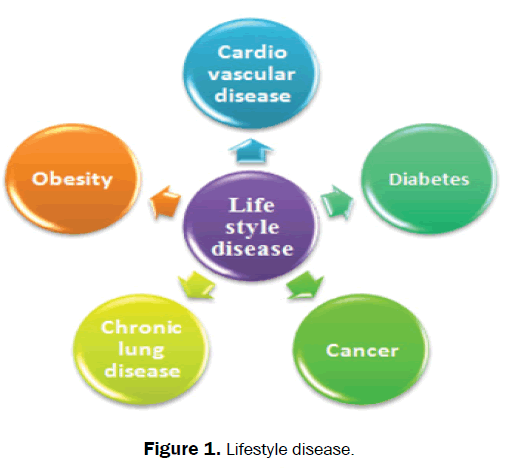
You may get a thorough understanding of the various illnesses by reading about the additional forms of lifestyle diseases that are listed below.
- Heart Disease
- Obesity
- Type 2 Diabetes
- Stroke
- Hypertension
- Chronic Obstructive Pulmonary Disease
- Asthma
1. Heart Disease
Heart diseases are an example of lifestyle disorders and refer to diseases affecting the heart, its valves, muscles, vessels, or internal electric pathways answerable for muscular contraction. Some of the naturally occurring conditions of heart disease include the following:
- Heart failure
- Arrhythmias
- Cardiomyopathy
- Coronary artery disease
- Heart valve disease
Risk Factors:
While the exact cause of heart disease or cardiovascular disease is not clear, there are several risk elements for developing these lifestyle disorders.
They are:
- Age of an individual
- Smoking
- Poor diet
- High blood pressure
- Diabetes
- Gender (Occurs more in men)
- High blood cholesterol levels
- Obesity
- Poor dental health
- Physical inactivity
- Stress
Diagnosis:
The different tests meant for analyzing such a lifestyle disease are as follows:
- Coronary angiography
- CT scans
- Radionuclide tests
- MRI scans
- Echocardiogram
- Blood tests
- X-rays
- Electrocardiogram (ECG)
- Exercise stress tests
2. Obesity
Individuals become obese because of dirty and unhealthful eating habits, decreased physical activity, stressful lifestyles, and other factors. Obese people have a body mass index (BMI) greater than 25, and they mourn from cardiovascular diseases, breathing problems, blood pressure, and diabetes. This is a primary condition that can result in several other chronic conditions in a person.
Risk Factors:
Besides harmful eating and lifestyle routines, there are several risk factors for obesity. These contain the following:
- Age
- Family history and genetics
- Race and ethnicity
- Gender (Occurs more in men)
- Unhealthy environments like obtaining exposure to chemicals known as obesogens. These can vary hormones and increase fatty tissue in a person’s body
Diagnosis:
- Individuals can interpret this lifestyle disease by:
- Executing a general biological exam like checking vital signs like temperature, heart rate, and blood pressure, measuring height, examining the abdomen
- Examining health history like weight history, eating patterns, physical activity, medications being administered, etc.
- Maintaining a check on waist circumference (abdominal fat or visceral fat)
- Studying body mass index (BMI)
- Checking for other health problems like diabetes, high cholesterol, underactive thyroid, liver problems, high blood pressure
3. Type 2 Diabetes
Type 2 diabetes refers to a state where cells cannot use glucose or blood sugar efficiently for power. This happens when the cells become heartless to insulin, and the blood sugar levels slowly become too high. A mixture of several factors like damaged beta cells, extra weight, metabolic syndrome, etc., are answerable for the reason of this lifestyle disease.
Risk Factors:
The different risk factors of this lifestyle condition are the following:
- Being overweight
- Drinking soda
- Excessive consumption of sugar and processed food and foods containing simple carbohydrates
- Following a passive lifestyle
- Consuming artificial sweeteners (sugar-free foods)
- Genetics or having family partners with diabetes
- Lack of exercise
- Stress
Diagnosis:
Type 2 diabetes is generally interpreted by the glycated hemoglobin (A1C) test. This blood test shows an individual’s moderate blood sugar level for the last two to three months. However, if the glycated hemoglobin (A1C) test is not available, or if a person has certain conditions that inhibit this test, a doctor may use the tests detailed below for diagnosing diabetes:
- Fasting blood sugar test
- Random blood sugar test
- Oral glucose tolerance test
- Regular screening with diagnostic examinations for type 2 diabetes
4. Stroke
A stroke happens when a portion of the brain fails blood supply and stops working. This affects the part of the body living controlled by the injured brain to stop operating. A stroke is also known as a “brain attack”, cerebrovascular mishap, or CVA. A stroke is mostly caused because of two causes– bursting or spreading of a blood vessel (hemorrhagic stroke) or a blocked artery (ischemic stroke).
Risk Factors:
The different risk factors of stroke are:
- High blood pressure
- Diabetes
- High cholesterol
- Smoking
- Having heart rhythm disturbances, especially atrial fibrillation
Diagnosis:
Some of the difficulties in diagnosing this lifestyle disease contain:
- Blood tests contain tests for checking whether blood sugar is too low or high, whether there is an illness, and how fast the blood clots
- Carotid ultrasound
- Computerized tomography (CT) scan
- Physical exams like preventing blood pressure
- Magnetic resonance imaging (MRI)
- Echocardiogram
- Cerebral angiogram
5. Hypertension
Hypertension or high blood pressure directs to the tension or high pressure in the streets – the vessels responsible for taking blood from the heart to the rest of the body.
Wondering what is the result of this lifestyle disease?
The different difficulties of hypertension are kidney (renal) disorder, heart condition, eye damage, stroke (brain damage), and hardening of the streets (arteriosclerosis or atherosclerosis).
Risk Factors:
While the exact cause of high blood pressure is not known, people must keep in mind the various risk factors of hypertension mentioned below:
- Family history
- Obesity
- Age of an individual
- Race
- Being physically inactive
- Tobacco usage
- Ingesting excessive salt or sodium
- Information of too little potassium
- Extreme consumption of alcohol
- Specific chronic diseases like sleep apnea, kidney disease, and diabetes
- Stress
Diagnosis:
A device called a sphygmomanometer, consisting of a stethoscope, valve, dial, pump, and arm cuff, is typically used to measure blood pressure. Doctors may suggest additional tests for people having high blood stress to confirm the diagnosis and study for underlying essentials causing hypertension. These contain the following:
- Electrocardiogram (ECG or EKG)
- Lab tests such as urine examinations(urinalysis) and blood examinations like a cholesterol test
- Echocardiogram
- Ambulatory monitoring (24-hour blood pressure monitoring test)
6. Chronic Obstructive Pulmonary Disease (COPD)
Chronic obstructive pulmonary disease (COPD) guides to a chronic lung disorder that leads to blocked and inflamed airflow from the lungs. The various symptoms of COPD contain a chronic cough with mucus, wheezing, long-term breathing issues, etc. The typical causes of this lifestyle disorder are genetics, smoking, and environmental factors like gas leaks and pollution.
Risk Factors:
The different risk factors for Chronic Obstructive Pulmonary Disease (COPD) are as shadows:
- Passive smoking
- Working with chemicals, dust, and fumes
- History of childhood respiratory infection
- A genetic condition known as Alpha-1 deficiency
Diagnosis:
After studying the signs and symptoms, discussing medical history, family history, and exposure to lung irritants, doctors may order extra tests to diagnose COPD. These contain:
- Chest X-ray
- Lung (pulmonary) function tests
- Laboratory tests
- Arterial blood gas analysis
- CT scan
7. Asthma
Asthma is a long-term inflammatory lifestyle disorder caused because of the narrowing and nodes of the airways. This common chronic disorder guides to shortness of breath, wheezing, protracted coughing, and chest tightness.
Risk Factors:
While the exact reason for asthma is not known, people must note the different risk factors that can improve the chances of designing asthma. These are listed as follows:
- Being overweight
- Having a blood family (parent or sibling) with asthma
- Smoking
- Having some other allergic conditions like atopic dermatitis
- Contacting exposed to exhaust fumes or other kinds of pollution
- Disclosure of occupational triggers like chemicals used in manufacturing, hairdressing, and farming
- Getting uncovered to secondhand smoke
Diagnosis:
Firstly, a doctor achieves a physical exam to rule out possible diseases like COPD or respiratory infection. Some lung function tests may be given to the concerned person to determine how much air actions in and out while breathing. These retain peak flow and spirometry. Besides these, some other examinations for diagnosing this lifestyle disease include:
- Imaging tests like chest X-ray
- Methacholine challenge
- Nitric oxide examination
- Provocative testing for exercise and cold-induced asthma
- Sputum eosinophils
- Allergy testing
Causes of Occupational lifestyle diseases
- The causes of NCDs can be separated into three broad categories: Modifiable behavioral risk elements, Non-modifiable risk elements, and Metabolic risk elements.
1. Modifiable behavioral risk elements: Behavioural risk factors such as excessive use of drink, bad food routines, eating and smoking tobacco, physical laziness, wrong body pose, and disturbed biological clock improves the likelihood of NCDs. Desk jobs in the modern workplace and the stress they cause are also considered significant risk factors for NCDs.6 More than 7 million people yearly pass away from tobacco-related causes, according to the WHO, and the death rate is expected to decrease significantly in the coming years. Excessive use of sodium in the diet causes 4.1 million casualties per year while alcohol information leads to around 1.65 million casualties due to NCDs. A simple absence of physical activity has been contending 1.6 million lives annually.
2. Non-modifiable risk elements: Risk factors that cannot be manipulated or modified by the application of an intervention can be called non-modifiable risk elements and contain:
a. Age
b. Race
c. Gender
d. Genetics
3. Metabolic risk elements: Metabolic risk elements lead to four major differences in the metabolic systems that improve the probability of NCDs:
i. Improved blood pressure
ii. Obesity
iii. Improved blood glucose levels or hyperglycemia
iv. Improved levels of fat in the blood or hyperlipidemia
Increased blood stress is the ultimate metabolic risk factor globally with 19% of global deaths attributed to it, followed by obesity and hyperglycemia.
What Different Strategies Are There to Prevent Lifestyle Diseases?
Go through the various ways mentioned below how to stop lifestyle diseases:
1. Having a Wholesome Diet
A wholesome diet is important for an individual’s health and well-being. One should down more fresh fruits, green vegetables, and foods rich in fiber and calcium. Excluding this, people can undertake the following steps for keeping a wholesome diet to prevent lifestyle disorders:
- Substituting junk foods with healthy snacks
- Consuming adequate amounts of water
- Destroying or limiting the consumption of oily foods
- Exchanging to multigrain or whole-grain flour
- Lowering the portion size and dining at frequent breaks (every 2 hours)
2. Keeping a Healthy Balance Between Physical Activity and Food Intake
It is necessary for every individual to keep the right ratio between physical activity and food. An adult person must undertake some form of physical exercise for at least 30 minutes 5 days a week to keep the resistant system active and performing properly.
For people of all ages, walking is a fantastic kind of exercise. It helps in the burning of calories and also improves energy, endurance, and strength. Besides this, there are several different ways to contain physical activity in one’s daily practice and thereby take a step towards precluding and control of lifestyle diseases. These contain:
- Doing household chores for a minimum of 30 minutes every day
- Taking short treks after having meals
- Choosing stairs instead of elevators and lift.
3. Monitoring the Body Weight
Individuals must ensure to watch their body weight closely. Having extra weight, especially near the stomach, can be a possible cause of cardiovascular death. Obese and overweight people are also at risk of acquiring extreme health issues such as diabetes, sleep apnea, and cancer.
One can control their weight by consuming a fat-free, low-calorie diet and also containing some kind of activity in their everyday routine.
4. Abstaining from Nicotine, Alcohol, or Any Different State of Drug
Around one-third of deaths caused due to heart disorders can be contained by avoiding alcohol and nicotine. Both of these substances cause considerable injury to the blood vessels that automatically doubles the risk of blood clotting and atherosclerosis.
By keeping these health-damaging habits at bay, individuals would be able to prevent lifestyle disorders and create high energy levels, enhanced lung ability, and younger-looking skin.
5. Refraining from consuming excessive amounts of salt, oil, and sugar
Anything in extra turns out to be unhealthy for the body. Ingesting a high amount of salt, sugar, and oil can guide to blood stress, heart problems (because of high cholesterol), and diabetes. So people must take steps to cut down on these three elements from their diet.
6. Opting for Periodic Health Check-ups
Periodic health check-ups supply a thorough analysis of an individual’s current health status. It also confirms to be useful in early diagnosis and timely therapy of ailments. Individuals exploring lifestyle diseases and their management must plan a meeting for a health check-up once every 6 months.
Therefore, those who are concerned about lifestyle disorders must take note of all the information shown above. They should also accept steps in their daily life to support these ailments at bay.
An essential way of controlling non-communicable disorders is by controlling the risk factors associated with them. In other words, a number of transmissible disorders can be controlled by holding the behavioral or lifestyle routines associated with those disorders. There are a number of low-cost solutions that can be executed by the government and other engaged groups to reduce everyday modifiable risk factors.1 Monitoring the trends of non -communicable disorders and their associated risks is crucial for coaching policies and guidelines.
A comprehensive approach is important that involves all sectors including health, finance, education, planning, and others, to minimize the impact of lifestyle disorders on individuals and society. The approach must instigate a collective effort to minimize the risks associated with no transmittable diseases and at the same time inspire interventions to manage and prevent them.
Lifestyle disorders pose a threat to the socioeconomic well-being of all nations, hence effective measures for their management are urgently required. The appropriate diagnosis, screening, and treatment of lifestyle problems are all part of managing them, in addition to offering palliative care to those who require it. A primary healthcare strategy must be used to offer high-quality lifestyle disease interventions, with an emphasis on early identification and appropriate management.
FAQs
What are the four lifestyle disorders?
Lifestyle disorders share risk factors equal to extended exposure to three adjustable lifestyle behaviors — smoking, unhealthy diet, and physical inactivity — and result in the development of chronic conditions, Specifically, chronic obstructive pulmonary disease, diabetes, obesity, metabolic syndrome, and heart and stroke conditions.
Why is it called a lifestyle disorder?
Lifestyle disorders are those illnesses whose incidence is mostly dependent on people’s everyday routines and is caused by poor interaction between individuals and their environment.
How many types of lifestyles are there?
In this lesson, you will learn about 5 types of lifestyles and the way people live. Each of these lifestyles is achievable as a result of certain factors or personal intentions. We can also talk about a lifestyle that is healthy, unwell, active, busy or heated, etc.
Is depression a lifestyle disorder?
Depression is a chronic disabling lifestyle disorder. There are several types of depressive disorders with symptoms varying from mild, to moderate to severe. The causalities for depression may be genetic or environmental.
What are the chance elements for these disorders?
smoking tobacco.
swallowing too much alcohol.
inadequate diet and nutrition.
physical laziness.
expending too much time in the sun.
not having specific vaccinations.
hazardous sex.

